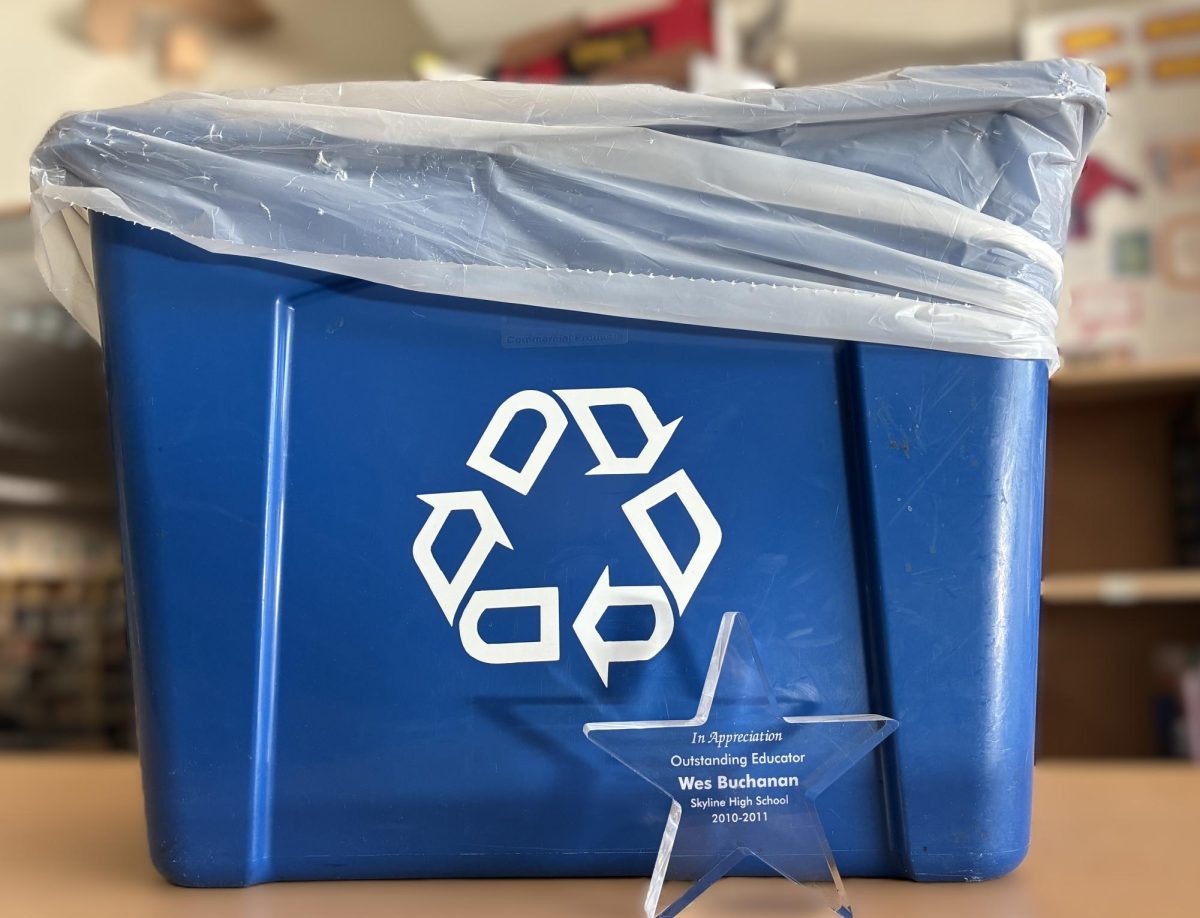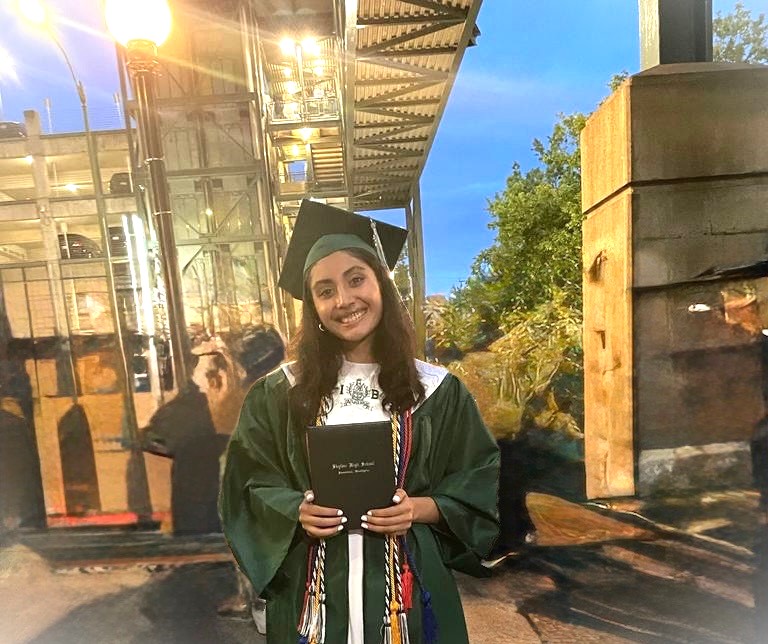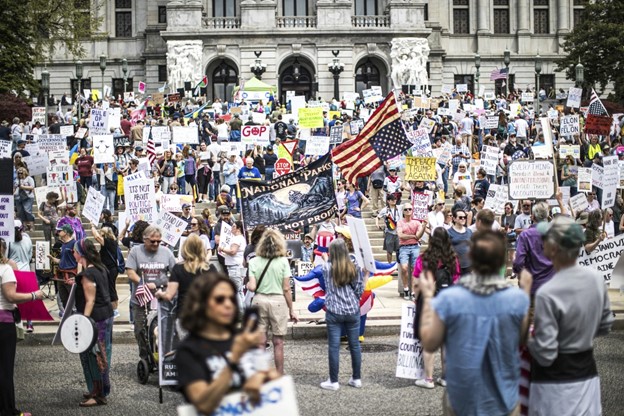Every day at Skyline, students toss their coffee cups, chip bags, and sandwich wrappers into one of many trash bins scattered around campus. But despite the recycling, compost, and landfill bins labeled with pictures, one question remains: Are we actually using them correctly?
As climate change becomes a growing concern, students and staff are starting to wonder how sustainable our school really is and how we can do better as a school
“I think Skyline has good options when it comes to sorting trash,” said Tessa R., a student at Skyline. “But most people don’t really know what goes where or they just don’t think it matters.” She believes the school could help students learn more by holding short seminars during Flextime to explain how proper recycling and composting make a difference.
Skyline custodian Wes Buchanan, who has worked in the district for 30 years, sees the issue up close every day. “We have garbage, compost, and recycling bins, all marked with pictures, but students often put things in the wrong place,” he said. That mix-up doesn’t just hurt the environment. It also costs money. “Skyline alone spends around $10,000 a year on the dumpster,” Buchanan explained. “If students sorted their waste better, we could cut that cost in half. Across 26 schools in the district, that could even save a teacher’s job.”
Skyline’s waste is sent to Cedar Grove, a local compost and recycling facility. But if compostables end up in the trash, or if recycling gets contaminated, the effort is lost.
Buchanan also pointed out how sustainability took a backseat after the COVID-19 pandemic. “It’s hard to get people to care. They don’t think of recycling as cool or important,” he said. Still, he believes even small steps can make a difference-like hanging posters, making announcements on SPTV, or simply spreading the word. “Even one person changing their habits can have a real impact.”
Clubs like the Skyline Green Team are trying to keep the momentum going. The group’s mission is to “greenify” the community and get students involved in helping the environment. But now, even that effort is facing challenges. Keerthana D., Green Team’s secretary, shared that the club’s funding might be cut by the district, which could limit their ability to hold events or lead sustainability projects at school.
Skyline has the tools to be a greener school, such as clearly labeled bins, active student leaders, and staff members who care. But tools only work if people use them. With thousands of dollars spent each year on waste and the future of the Green Team’s funding uncertain, it’s clear that awareness alone isn’t enough. What we need now is follow-through. If students take a little more responsibility, like learning what goes where, spreading the word, and supporting school-led efforts, we can make a true difference. A more sustainable Skyline doesn’t have to be hard: it just requires small steps, and it starts with all of us.
For more information:









